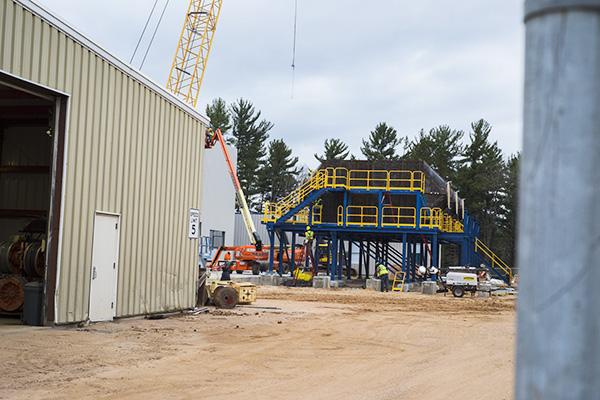NMU paid over $330,000 for their recent annual electric bill, roughly $84,000 more than last year, as a result of an energy rate increase put in place by the Marquette Board of Light and Power (BLP) in October 2016.
 The rise in utility costs at the university reflects an energy rate increase of 30 percent that BLP has set for all its customers. The increase was implemented to pay off a $65 million project BLP is undergoing to build a Marquette Energy Center. The center will use natural gas generators to provide a more efficient energy source to BLP customers. The generators will burn natural gas as primary fuel and switch over to fuel oil when necessary, according to the BLP website.
The rise in utility costs at the university reflects an energy rate increase of 30 percent that BLP has set for all its customers. The increase was implemented to pay off a $65 million project BLP is undergoing to build a Marquette Energy Center. The center will use natural gas generators to provide a more efficient energy source to BLP customers. The generators will burn natural gas as primary fuel and switch over to fuel oil when necessary, according to the BLP website.
The rate hike went into effect on Oct. 1 and has increased the average residential customer’s monthly bill from approximately $58 to $76. For NMU, the electric bill from last month depicts a 34.14 percent increase. The increase for BLP customers for electricity per kilowatt hour will be in effect for the entire year. The increased rate amount is applied to the energy consumption customers typically use within a month on their utility bill.
“Our consumption was less but our bill was more,” said Kathy Richards, associate vice president of engineering and planning facilities.
Facility improvement measures started in 2010 when NMU first became concerned with consumption of electricity, gas and water. Starting with the Jacobetti Complex and the University Center, by 2015, NMU had completed performance contracting for 12 campus buildings to conserve on utilities.
This initiative helped reduce the overall electric consumption by 15 percent at NMU, Richards said.
“If we hadn’t done that, we would be spending $750,000 more a year,” she added.
Looking ahead, Richards said NMU is always looking at ways to improve their systems that help to reduce consumption. However, it requires up-front dollars most of the time to make improvements, so simply being mindful of electric consumption can go a long way.
“Right now we’re not producing any of our own electricity but what we can do in the future is to be conscious of our electric consumption and take efforts to reduce how much we are using,” Richards said.
Ultimately, the higher utility costs were not a result of NMU’s consumption but rather the rate increase that was set by BLP.
“But, everybody on campus can help to reduce the impact of the rate increase by being conscientious about how much we’re using electricity and only using it as necessary and using it efficiently,” Richards said.
Consolidating the use of electrical appliances in offices or dorms on campus will help to keep electric costs low, she added. Richards encourages staff and campus residents to unplug appliances that use electricity without being turned on over Thanksgiving break.
“Moving forward, what we pay will depend on what the [BLP] rate increases and so far they haven’t said what next year’s rate adjustment will be yet,” Richards said.
David Lynch, assistant director of utility operations at BLP said the rates are permanent at this point until the next cost-of-service study is approved through the city commission. He said BLP was in need to add a new generators due to transmission constraints that came from using diesel as a primary source for delivering electricity.
“We looked to construct a facility to meet our needs and our customers’ needs,” Lynch said. “The estimates for that drove the need for the increase to pay for the asset.”
Lynch said the intent is to run the new generators solely on natural gas because it’s a “much cleaner” energy source with less emission than diesel fuel. He said due to the area, however, with Marquette located at the end of a natural gas pipeline, BLP opted for dual-fuel engines on the generators that can switch between natural gas and diesel if for any reason the generators malfunction.
The Marquette Energy Center is expected to be completed and fully operational by June 1, 2017.
Lynch said the rate increase has greatly helped BLP with the advancement of the project.
“It’s enabled us to proceed with construction, which will provide customers with an asset for 50 years while substantially reducing emissions,” he said.




























